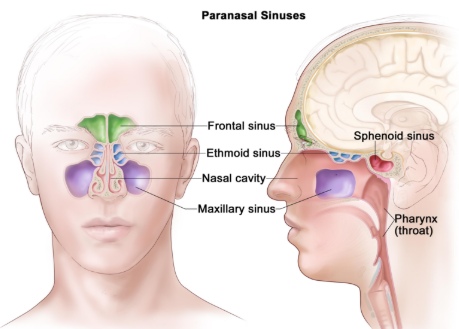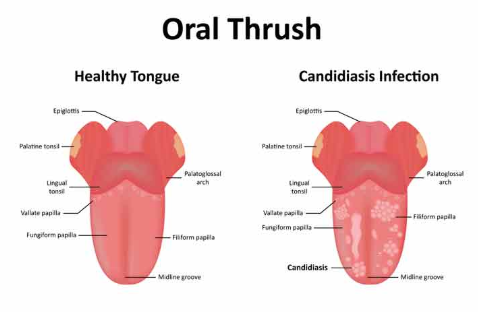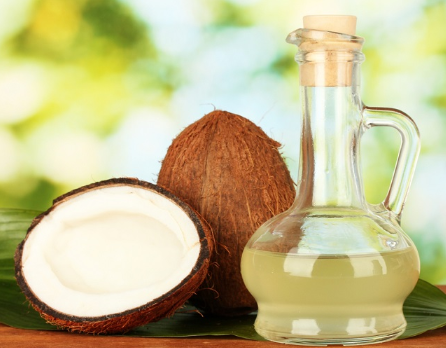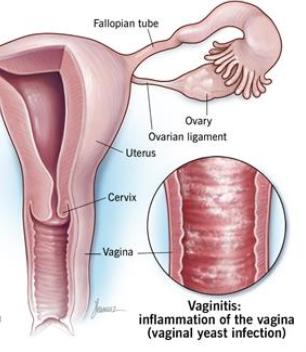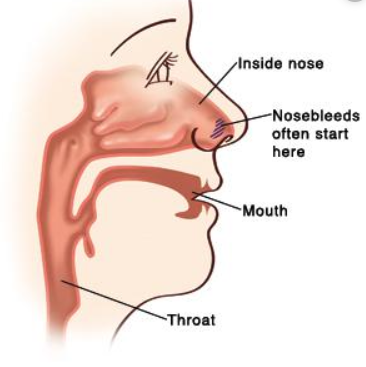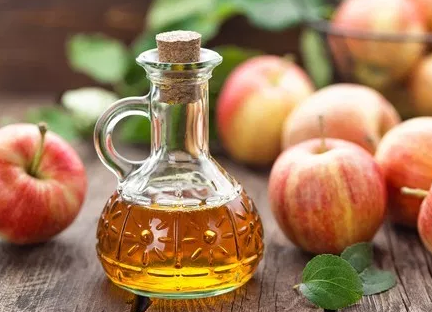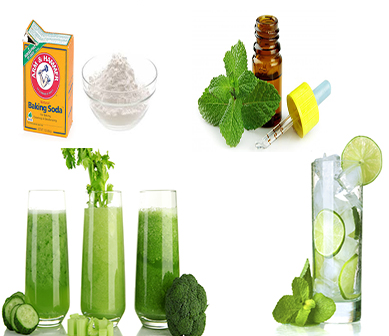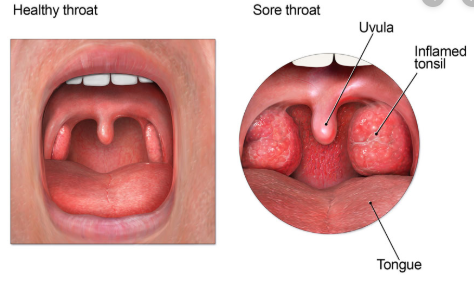Nose blisters are sores that form on the inside or outside of a person’s nose. Such blisters can form due to variety of reasons. In some cases, they form because of some type of injury to the nose. More often, they form because of a bacterial infection or even as a result of virus infection. Bacteria called impetigo is a common cause of blisters in nose, also viruses such as herpes can cause them as well.
Blisters in Nose Causes
A blister inside nose will always take the form of a pimple, benign growth or sometimes a cold sore. Blisters inside nose tend to be more sensitive than bumps or pimples on the other area of the body. You might even see a black or white bump inside the nose while looking in the mirror. Understandably, you might think that such a strange bump is something serious but it is important not to worry. A bump inside the nose can be a minor issue, or it may be a sign of an infection.
Here are 6 among other potential causes of blisters inside the nostril.
- Cavernous sinus thrombosis. It is rare but sometimes a blister inside the nose is indicative of a dangerous condition called cavernous sinus thrombosis. This condition forms when an infected furuncle in the nose create a blood clot in a large vein located at the base of your skull, or the cavernous sinus.
- Squeezing the pimple. It is always a bad idea to squeeze the pimple inside your nose. While the pimple inside your nose may be hurting or irritating, squeezing it aggravate the infection and increase the likelihood that it will spread deeper inside the nose.
- Excessive nose picking. Excessive picking your nose can also cause a bump in the nose from damaging the hair follicles make it easy for bacteria to cause a possible infection.
- Nasal polyps. Nasal polyps, or a bump inside the nose’s cartilage, are another common cause of painful blisters inside the nose. They form as a result of chronic inflammation of the nose’s mucous membrane.
- Nasal furuncles. Another bacterial infection that can cause a bump inside the nose is called nasal furuncles. These are deeper infections or boil that show up inside the nose. Nasal furuncles are considered serious since they can cause cellulitis, which is a skin infection that can spread to the bloodstream. Sometimes cellulitis can lead to death, if the bacterium responsible is methicillin-resistant, staphylococcus aureus [MRSA].
- Folliculitis: Bacteria can also get inside the pores, which can cause irritation, inflammation, and redness that make the bump tender and painful and can lead to infections such as folliculitis, or nasal vestibulitis. It can cause one or more red or white bumps usually found inside the nostril opening. The most common cause of folliculitis is the staphylococcus bacteria. Frequent picking or blowing the nose can cause or aggravate the condition.
- This skin condition is common among babies. It starts when the streptococcus bacteria latches on to the skin. It is characterized by sores all over the face and mouth. If the condition is severe, the sore can reach the inside of the nose. They will later on turn into blisters packed with nasty and sticky fluid within them.
- This is a common auto-immune condition that attacks the immune system of the body, making it more vulnerable to wide number of diseases. Lupus patients often suffer from skin bruises, bumps, hair loss and even sores in the mouth. Though rare, some patients have also reported having sores in their nose.
What Causes Fever Blisters inside Nose
Fever blisters are also called cold sores, and are painful infections caused by the herpes simplex virus [HSV]. Blisters may show up anywhere on your body but are most likely to appear on your gums, the outside of your mouth and lips, your nose, cheeks, or fingers. The sores usually last for ten days and are contagious until they crust over completely.
Causes of fever blisters in nose
The symptoms of cold sores should not be ignored. They usually indicate that there is an on-going infection in the system and they may be a follow:
- One may suffer from a cold or a flu
- The sores come on when one comes in contact with someone exposed to the herpes simplex
- Windy conditions could aggravate a cold and bring on cold sores
- Menstrual condition might aggravate the sores
- Dry winter month usually bring on such condition
- People who have compromised immune system more are likely to fall prey to such infection.
Symptoms of fever blisters in the Nose
The following symptoms usually appear which telltale signs of fever blister in the nose are:
- When one is suffering from a cold and is facing congestion in the nose
- Frequent blowing of nose due to which the inner lining of the nasal passages get irritated or inflamed
- Blisters form as a result of when, one comes in contact with someone infected by the herpes virus or If one conducts oral sex.
- Dryness inside the inner lining of the nose especially during the winter months.
- Herpes simplex infection could occur which is noted by fever, tiredness, sores around the mouth, swelling of the glands and pain inside the mouth and gums.
How to Treat Blisters in Nose
Cold sores, which are sometimes called fever blisters, are a viral infection experienced by many people. They are caused by the herpes simplex [HSV] virus and are contagious even if you can’t see them. Although blister usually present on the mouth or other areas of the face, in some rare cases they may appear inside your nose.
Cold sores or blisters are unsightly and annoying for most people, however, they typically heal themselves without any treatment. They can however spread too much in people with immunosuppressant or result in more severe symptoms. This would require administration of medications to control the viral infection.
You should seek the attention of your doctor if the normally white cold sores develop pus or become reddened as this is mostly a sign of bacterial infection. You should also see your doctor if the sores in the nose spread to other parts of the body especially the eyes. Herpes virus can make the cornea to develop an ulcer, resulting in blindness.
Treatment of Cold sores in the typically involves the use of antiviral and soothing products. Antiviral treatment involves the use of antiviral creams. Most non-prescription or over-the-counter antiviral creams contains acyclovir as the active ingredient. Such creams are sold with names such as herpetad, soothelip and zovirax.
When used at the onset, that is as soon as the tingling sensation is felt, acyclovir can prevent further development of the sore. If applied later on, it can reduce the period of infection. Although it used to be only available on prescription, acyclovir creams can now available in most pharmacies.
To treat blisters you can use soothing products to relieve the discomfort associated with these sores. Such products typically contain:
- Antiseptic ingredients such as [iodine and cetrimide]
- Soothing ingredients such as zinc sulphate
- Local anesthesia like lidocaine or such anesthesia are sold under names such as Cymex, Blistex,
- Brush-off lotion and lypsyl cold sore gel among others
These products only soothe the sores but have no action against the herpes virus. They are however not generally recommended for children.
There are great numbers of home remedies too that can be used to treat blisters in the nose they include:
- Applying some petroleum jelly which quickens up the healing process. It also prevents secondary infection of the cold nasal sores by proving a protective barrier.
- Chew a licorice whip: the glycyrrhizin acid found in licorice helps to shorten the duration of infection. Look for the term “licorice mass” in the ingredients section of the product labeling to ensure that the whip contains pure licorice. Sprinkling a little licorice powder on the cold blister is also a great option.
- Place some ice cubes on the blisters as soon as you detect it is forming.
- Dab a cotton ball soaked in milk gently on these sores. This usually quickens the healing process.
How to Get Rid of Blisters in Nose-Home Remedies
- Taking Vitamin C
Vitamin C is known to have beneficial properties that help to cure or prevent blisters and cold sores. Vitamin C cannot prevent the onset of blisters it can definitely help to boost immunity system. Vitamin C should be taken as follow:
- In the form of oils that can be purchased from local stores
- In the form of fresh fruit juices
- By consuming fruits that are rich in vitamin C like lemon, sweet lime and others
- Saline Sinus Rinse
Sinus rinse is another form of effective solution for the cold sores inside one’s nose. Acting as a gentle antiseptic, a saline nasal rinse will help clean the infected area and dry out the bacteria on the skin surface. This common solution also help clear blocked nasal passages and eases sinus issues. This rinse can be done anywhere and only requires salt and water.
To make a saline nasal rinse at home considers the following:
- Dissolve a few tablespoon of salt in warm water and by use of cotton wool apply it to the infected nasal opening.
- Alternatively you may want to put your saline solution in a squirt bottle to ease getting the solution into the nose. This method ensures that the solution gets up into the nose and other nasal cavity.
- Drink plenty of fluids
The body is made up of mostly of water, drinking plenty of fluids will help keep the body system flushed of harmful toxins and infections.
- Juices like cucumber that have high water content are extremely beneficial to help treat blisters in the nose.
- Drinking warm teas made from ginger root is also great to help heal blisters in the nose.
- A and D Ointment
The use of A and D ointment has been helpful for various skin ailments for years. This ointment, rich in both vitamin A and D help to fight harmful bacteria that are responsible for the onset of cold sores in the nose. When the skin itself is fortified with this powerful vitamin it can better fight the bacterial infection that cause blisters in the nose.
A and D ointment has no side effects and it has been used for a very long time. The ointment helps to reduce inflammation, keep the blisters from drying out and cracking. It is recommended to apply the ointment directly to the affected area with a Q-tip or cotton swab so as to avoid spreading the infection to other parts of the body. If the blister is deep inside the nose a Q-tip is best way to apply the ointment to the blisters.
- Rubbing alcohol
Alcohol has antiseptic properties that destroy the bacteria on the blister and speed up healing process.
To use alcohol:
- Dip a Q-tip into a glass of alcohol and the insert it into your nose.
- Rub gently over the blister for one minute.
- Repeat this process twice a day.
- Use Saw Palmetto
Saw palmetto contains a combination of plant sterols, fatty acids, flavonoid and polysaccharide that boost the immune system and block excessive dihydrotestosterone to the sebaceous glands. An increase in number of sebaceous glands will create greater opportunities for blisters inside the nose.
- Take a warm shower
Taking a warm shower or use of aromatic oils in the warm bath help to heal and clear up the nasal passages. Warm water bath is highly recommended to those who suffer from sinus as well as have nasal blockage. One can even massage oneself with olive oil before going in for the bath. Not only does the message have a therapeutic effect, it also helps to get the circulation moving and to reduce the congestion in the chest. For those who are suffering from cold and recurring sinus problems, warm baths are recommended to gain relief.
- Apply Antiseptic gels or petroleum jelly
Application of petroleum or anti-septic substances might cover the sores and prevent them from becoming dry, sore and painful. The application of such substances should be done after a warm and steamy bath is taken. At that time the nose tissue are moist and clean. At such a time application of gels will help to protect them from becoming dry and more painful.
- Inclusion of Probacterial Food items in your diet.
It is important to add on probacterial food in your diet. Probacterial foods include:
- Yoghurt
- Cheese
- Cottage Cheese
This food items are known to help promote the growth of healthy bacteria which can fight other bacterial from causing infection such as cold, sinus infections or blisters.
- Avoid certain foods
When you have blisters in nose you need to avoid foods like:
- Nuts
- Chocolate
- White flour products
- Sweet beverages
Many of such products contain arginine which can exacerbate cold flu like symptoms
- Avoid contact with someone carrying Herpes Virus Infection
While blisters in nose could be viral or bacterial in nature, it is necessary to determine the nature of the infection or nature of the blister. If it established that it has been caused by herpes virus, one need to avoid contact with such a person because herpes viral is known to be highly contagious.
- Doing exercises
While one may wonder how exercise can possibly be linked as a remedy to blister in the nose, but there are many benefit to gain from exercise such as:
- Increases the blood circulation
- Clears up nasal cavity
- Reduces congestion of chest
- Strengthens the immunity system
- Reduction of Stress
It is necessary that one reduces stress in their lives. Stress leads to hormonal imbalance in the body system which lowers the immunity levels.
- Having healthy eating habits
Having healthy eating habits does not only involve eating food that is health but also time, the portion consumed and so forth. It is necessary to ensure the following:
- A proper breakfast shout be eaten.
- It should be followed with light snacks.
- Lunch and light snacks in between will help to keep the hunger down.
- Light dinner early in the evening.
- Strengthen your immune system
The immune system need to be strengthen from inside to prevent the frequent onset of cold flu and blisters. Immune system can be strengthened by:
- Healthy eating habits
- Reduction of stress
- Exercises
- Use of Witch Hazel
It is known has antibacterial and antimicrobial astringent properties that help to fight bacteria hence promoting healing and prevent the blister from spreading to other parts of the body.
To use Witch Hazel: The infected area should be treated with witch hazel that needs to be applied with a q-tip or cotton ball.
